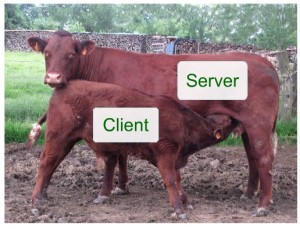Wallets are personal
 A lot of big companies are eager to get their hands in your pockets — literally. They want your mobile phone to work as a digital wallet, and they want the digital wallet app you use to be theirs.
A lot of big companies are eager to get their hands in your pockets — literally. They want your mobile phone to work as a digital wallet, and they want the digital wallet app you use to be theirs.
Naturally, this looks like it should be a big business — and to some degree it is already. But it also hasn’t met promotional expectations. This became clear a few days ago, when comScore released Digital Wallet Road Map 2013, a $4995 report on the digital wallet business. In a press release highlighting the report’s findings, Andrea Jacobs, comScore Payments Practice Leader, said “Digital wallets represent an innovative technology that has not yet reached critical mass among consumers due to a variety of factors, including low awareness and a muddied understanding of their benefits.” Here’s how the release unpacks that:
The current digital wallet landscape remains fragmented among providers because of low consumer adoption outside of PayPal, with only 12 percent of consumers claiming to have used a digital wallet other than PayPal. However, study results indicated that the digital wallet market opportunity could eventually reach 1 in 2 consumers as consumers become more aware of the offerings and educated on their benefits.
Consumer Awareness and Usage of Digital Wallet Offerings
November 2012
Source: comScore Digital Wallet Road Map 2013Digital Wallet Percentage of Total Respondents Aware of Digital Wallet Percentage of Total Respondents Who Used the Digital Wallet PayPal 72% 48% Google Wallet 41% 8% MasterCard PayPass Wallet 13% 3% Square Wallet 8% 2% V.me by Visa 8% 2% ISIS 6% 1% Lemon Wallet 5% 1% LevelUp 5% 2% One clear barrier to use of digital wallets is that the concept is often difficult to convey and prone to misinterpretation. Even after being asked to review the websites of particular digital wallets, respondents across all wallet brands still scored an average of just 45 percent in terms of demonstrated level of understanding.
Here’s the problem: wallets are personal. Even if you have a wallet with a brand name on it (say, Gucci or Fossil), it isn’t their wallet. It’s yours. What you keep in it, and how you use it, are none of their business. In fact, those companies would never think of making it their business, because all they’re providing you is a place to put your credit cards, your cash, or whatever other flat things you feel like carrying around in your pocket or purse.
So far, all the digital wallets out there are not yours. They belong to some company. You merely use the app. The wallet is their business, not yours. In this respect they aren’t much different than credit cards or various loyalty cards, which are things you put in your wallet; not the wallet itself. The wallet itself should be agnostic, if not oblivious, to what you put in there. It should be like a toolbox, where you can store lots of different tools, made by lots of different companies, made for serving different purposes.
All the digital wallet companies in comScore’s chart have isolated, proprietary and silo’d ways of providing payment benefits to users. Imagine buying a tool box from Sears that could only hold its own brand of tools, which would only work with devices from companies that were partners of Sears. That’s what we have with digital wallets so far. It’s the same problem we had with online systems (AOL, Compuserve, Prodigy, etc.) before the Internet came along. They were closed silos.
The Net works because it is a general purpose system. It isn’t run by any one company. Likewise, PCs are also general purpose systems. The company making them doesn’t insist that it only works with certain other partner companies. In that respect it’s open, just like the wallet in your pocket or purse. Smartphones, on the other hand, are general purpose to a more limited degree. Apple tells you what apps can and can’t run on your phone. Google makes sure some of its own apps (such as its wallet) run only on Android phones — or run better on Android than on Apple’s or other companies’ phones (as it did for years with Google maps for Apple).
I suggest that the digital wallet might be best thought of as something that’s part a general-purpose thing called the personal cloud.
Your personal cloud is your personal space, which you run for yourself in the networked world. In it you define the ways that your personal data interacts with the world of things, and of services from companies and other entities. That may sound complicated, but it’s actually no different than the personal space you call your house, your car, and your body. In fact, you can think of a personal cloud as something akin to all three, but in the networked world rather than in the physical one. For more on this read Phil Windley, starting here; and follow what Kuppinger-Cole says about Life Management Platforms (which I recently visited here).
So, to sum up, the main thing wrong with digital wallets today isn’t what they do. It’s that they are called “wallets.” Instead they should be called what they really are, which is payment services. (Yes, they do more, but the main thing they do is facilitate transactions.)
The notion that something so personal as a wallet should be provided for you, as a service, by a company, is typical of the calf-cow thinking that has dominated computing for the duration. There is nothing wrong with this, if it’s still 1995. But it’s now 2013, and it’s time we moved on. And, to do that, I’d like to see real digital wallets — personal ones — come up as a feature of personal clouds. So, let the conversation begin. Then the development.
Bonus link: Google’s Wallet and VRM.

 The fight between the free market and the followed market is about to begin. And the way to bet is on the free market, because it’s what we know works best. Also because the followed market is nuts. It only persists because it’s normative at the moment, and an enormous sum of investment is going into improving what’s most nuts about it: following people around and constantly guessing at what they might want (or trying to make them want something some algorithm thinks it might be able to make them want).
The fight between the free market and the followed market is about to begin. And the way to bet is on the free market, because it’s what we know works best. Also because the followed market is nuts. It only persists because it’s normative at the moment, and an enormous sum of investment is going into improving what’s most nuts about it: following people around and constantly guessing at what they might want (or trying to make them want something some algorithm thinks it might be able to make them want). Not love to have them, but love interacting with them, knowing them, talking with them, learning from them, involving them in the business, and letting them take the lead sometimes. (And not just by using a “loyalty card” or some other gimmick.)
Not love to have them, but love interacting with them, knowing them, talking with them, learning from them, involving them in the business, and letting them take the lead sometimes. (And not just by using a “loyalty card” or some other gimmick.)


 b. Undertaken on an individual basis: private studies; private research. c. Of, relating to, or receiving special hospital services and privileges: a private patient.
b. Undertaken on an individual basis: private studies; private research. c. Of, relating to, or receiving special hospital services and privileges: a private patient.











